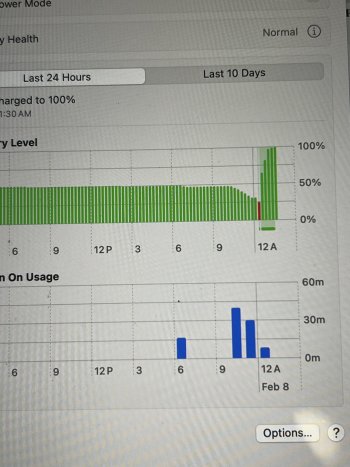Last night was the second time this happened. Laptop was just sitting in the background when I noticed it was off. Then I remember this happened about a month ago. Had to plug it up and when it came on the battery was at 1%. Everything looks fine as for as the battery goes on coconut battery as well as on the macOS battery status. Any idea on why this would just start happening out of nowhere. Laptop is lightly used and everything is up to date with the latest macOS. Im attaching a picture the red is where it shut off and showed 1% when it came back on.
![IMG_2586.jpeg IMG_2586.jpeg]()



